Happy Easter! It is time to dye your Easter eggs and this year you can use everyday vegetables and berries to naturally color your eggs. This is so easy to do. All you need is distilled vinegar, salt, blueberries, beets, turmeric, yellow onions, and red cabbage. If you want a marbled look, you will need some cheesecloth and string.
There are many different ways to hard boil eggs. I find it is easier to let the eggs sit in the boiling water instead of simmering them after boiling. It always seems like I am chasing after my son when the cooking timer goes off. This recipe gives me more flexibility and I do not overcook them.
To hard boil your eggs, put them in a pot and cover them with cool water. Bring to a slow boil on medium. Add a little vinegar if you are afraid they will crack; this prevents the egg white from leaking out. Bring to a boil and then turn off the heat. Leave the eggs in a pot covered to continue cooking for 10 to 12 minutes. They can stay in for longer if you need to help the kids with something. They will not overcook. Rinse in cool water and set aside to dye later.
We were at the Atlanta Botanical Gardens today at the natural dying class and Heather told me about using onion peels for the yellow, marbled eggs. It worked and is so easy to do. Thank you for the suggestion.
If you want yellow marbled eggs, wrap a yellow onion peel around the egg and wrap cheesecloth around the onion and egg. Tie with string. Hardboil the eggs using the instructions above.
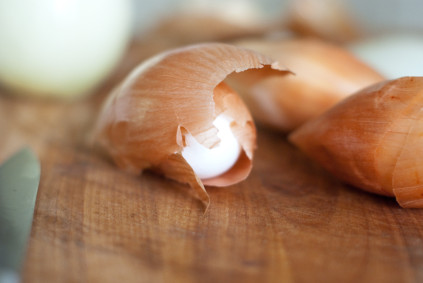
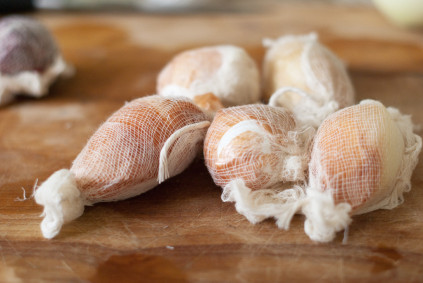
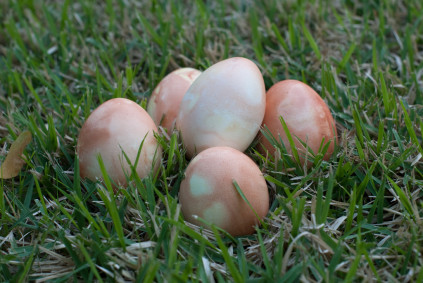
Crayons do not absorb the dyes so your kids can drawn patterns on the eggs while you are preparing the dye solutions. Do not use crayons on the eggs dyed in turmeric.
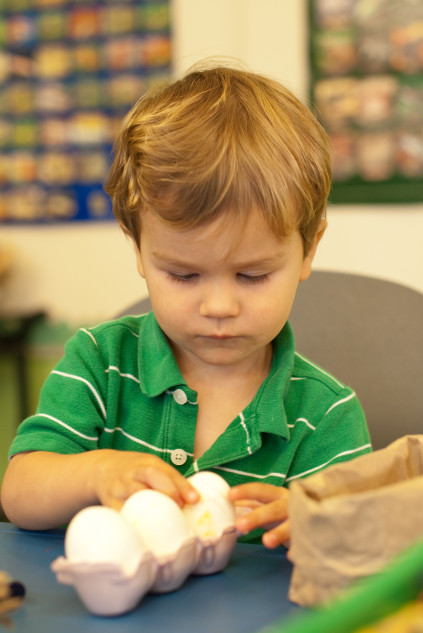
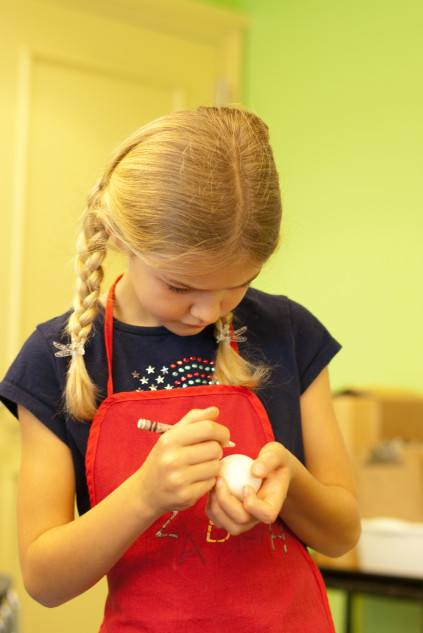
Before you begin to decorate and dye your eggs, wash them with soapy water to get all the oils off the shell. The rinse them and dry. This will help the dyes set on the shell.
For yellow eggs, boil 1 quart of water, 2 tablespoons vinegar, and 3 tablespoons ground turmeric. Add 2 tablespoons of salt when the water is boiling. Turn down to a simmer. The water should be yellow. Slowly drop your eggs into the warm turmeric dye. Use a stainless steel pot and a slotted spoon you do not mind staining. A ceramic pot will turn yellow and it is permanent. Let the eggs sit in the warm water until they are the desired color. The longer they sit,the yellower they become. Place in an ice bath to cool. These took 3 to 5 minutes.
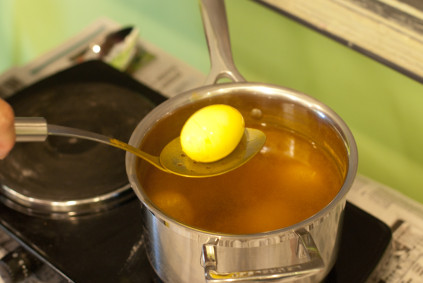
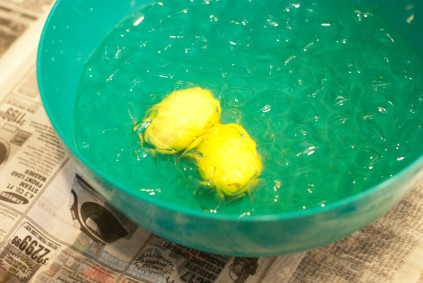
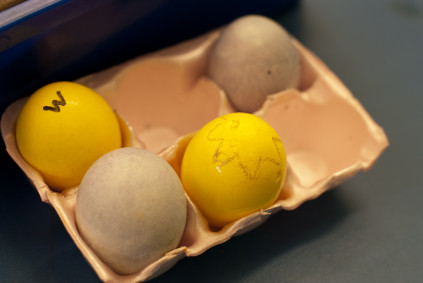
For blue eggs, add 1 to 2 cups of frozen blueberries and 1 tablespoon of vinegar to a bowl. Roll the eggs in the juice or let them sit. Wipe off the excess and you are done.
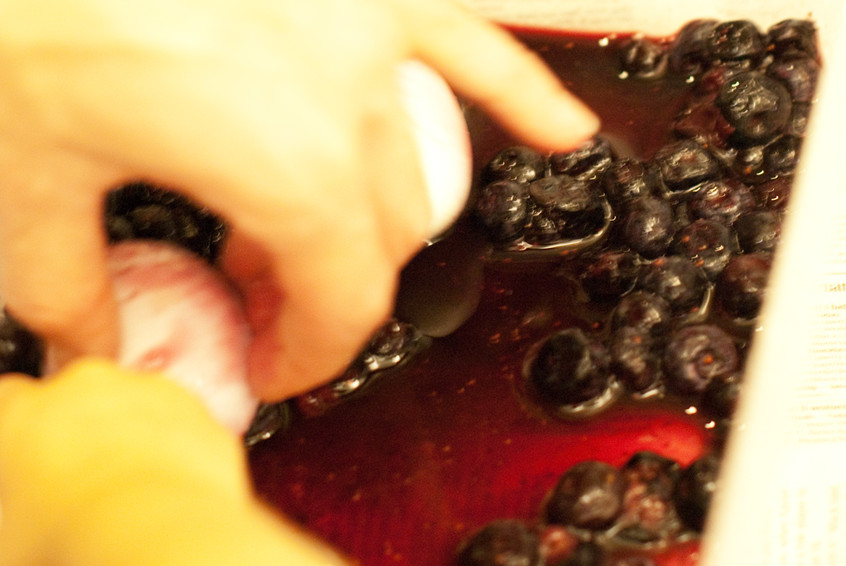
For Robin’s Egg Blue (teal), boil a half to a whole head of red cabbage in 1 quart of water for 30 minutes. Use a cast iron or stainless steel pot. Do not add vinegar. Let the water cool and strain the cabbage. It is ready to dye your eggs a gorgeous robin’s egg blue. This was Heather’s suggestion as well.
I hard boiled my eggs in the red cabbage water for 10 minutes on simmer and then let them soak for 2 hours in the water. The picture on the bottom left is the robin’s egg color. For a vibrant blue, let your eggs soak overnight in the cabbage dye in the refrigerator. You can see the difference in the photos. The vibrant blue is on the bottom right.
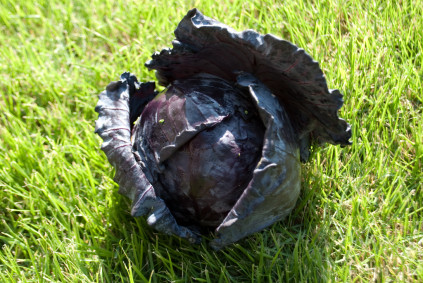
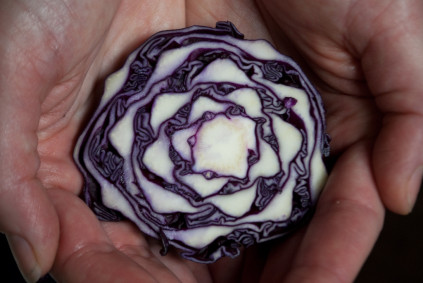
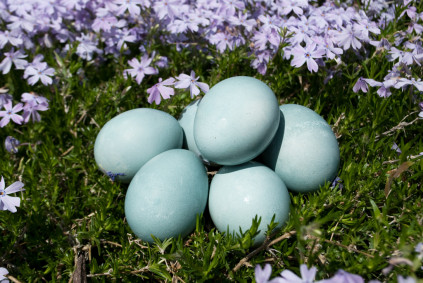
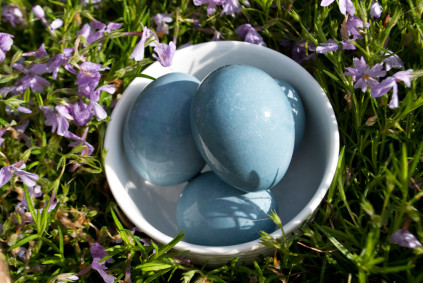
For pink, grate 5 tablespoons of beets and boil them in a quart of water until the water turns bright red. About 15 minutes. Let cool, strain, and then add 1 tablespoon of vinegar. Soak the eggs until your desired color. Wipe off the excess; it will stain. These turn a grayish hue in the refrigerator so use them immediately for the best presentation.
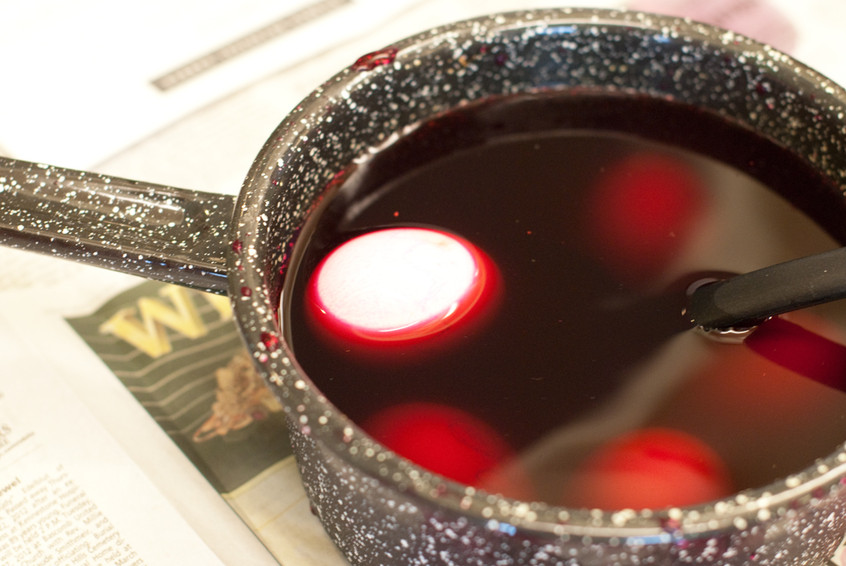
You can also buy IndiaTree dyes if you do not have time to make the vegetable dyes listed above.
Have a great time experimenting with all these colors with your kids. My kids love the marbled ones and the Robin’s Egg color. They hope to find an abandoned Robin’s nest to set them in for Easter.
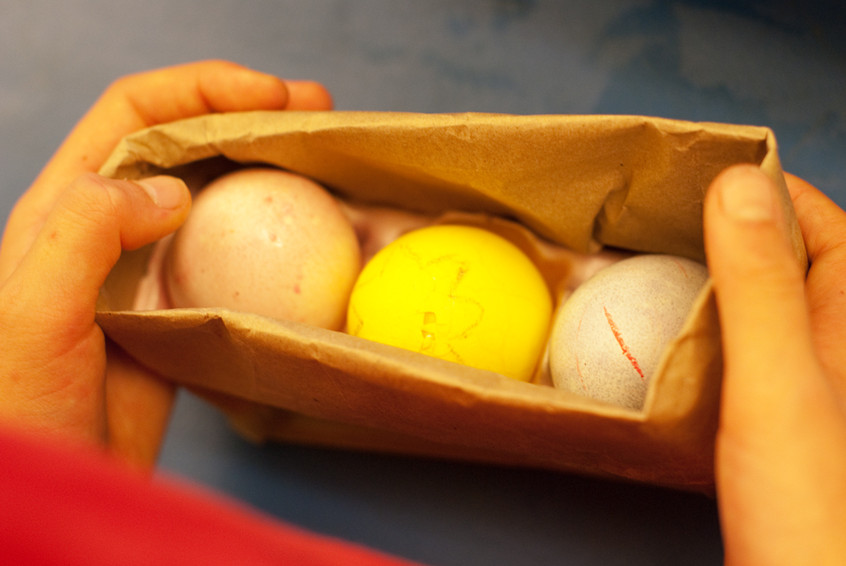
Enjoy your holiday!
